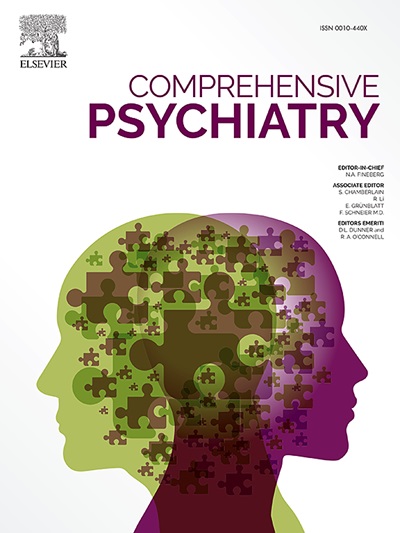绘制合成代谢雄激素类固醇(AAS)使用途径
IF 4.2
2区 医学
Q1 PSYCHIATRY
引用次数: 0
摘要
这篇简短的交流介绍了一个使用合成代谢雄激素类固醇(AAS)的模型,以身体不满意为中心因素,受社会文化、心理和行为影响。媒体驱动的身体理想、性别和性取向可能会显著影响身体形象,而低自尊和某些人格特质也会导致不满意。饮食失调行为(DEB)和剧烈的体育锻炼是间接因素,特别是在健身社区,“传统”的身体改造方法(即运动和饮食)可能无法满足内在理想。该模型强调了一个恶性循环:对身体的不满推动了AAS的使用,而AAS的使用又加剧了对身体的不满。社交媒体通过推广不切实际的标准放大了这个循环,而包括LGBTQI+人群在内的边缘群体则面临着遵守异性恋标准的额外压力。身体不满意、DEB和高强度体育锻炼之间的重叠强调了细致的研究来解开这些推论的必要性。该模型主要反映了西方的身体理想,限制了它在不同文化中的适用性。通过针对社会标准和个人脆弱性的早期干预来解决身体不满是至关重要的。此外,考虑性别和性别多样性方面的方法对于促进身体接受和降低AAS使用和DEB的风险至关重要。本文章由计算机程序翻译,如有差异,请以英文原文为准。
Mapping the pathway to anabolic-androgenic steroids (AAS) use
This short communication introduces a model for the use of anabolic-androgenic steroids (AAS), with body dissatisfaction as the central factor, shaped by sociocultural, psychological, and behavioral influences. Media-driven body ideals, gender, and sexual orientation may significantly influence body image, while low self-esteem and certain personality traits also contribute to dissatisfaction. Disordered eating behaviors (DEB) and intense physical exercise act as indirect contributors, particularly in fitness communities, where “conventional” body modification methods (i.e., exercise and diet) may fail to meet internalized ideals.
The model highlights a vicious cycle: body dissatisfaction drives AAS use, which, in turn, worsens dissatisfaction. Social media amplify this cycle by promoting unrealistic standards, while marginalized groups, including LGBTQI+ populations, face additional pressures to conform to heteronormative beauty norms. The overlap between body dissatisfaction, DEB, and intense physical exercise underscores the need for nuanced research to disentangle these inferences.
The model predominantly reflects Western body ideals, limiting its applicability across cultures. Addressing body dissatisfaction through early interventions targeting both societal standards and individual vulnerabilities is critical. Also, approaches accounting for aspects of sex and gender diversity are essential to promote body acceptance and reduce the risk of AAS use and DEB.
求助全文
通过发布文献求助,成功后即可免费获取论文全文。
去求助
来源期刊

Comprehensive psychiatry
医学-精神病学
CiteScore
12.50
自引率
1.40%
发文量
64
审稿时长
29 days
期刊介绍:
"Comprehensive Psychiatry" is an open access, peer-reviewed journal dedicated to the field of psychiatry and mental health. Its primary mission is to share the latest advancements in knowledge to enhance patient care and deepen the understanding of mental illnesses. The journal is supported by a diverse team of international editors and peer reviewers, ensuring the publication of high-quality research with a strong focus on clinical relevance and the implications for psychopathology.
"Comprehensive Psychiatry" encourages authors to present their research in an accessible manner, facilitating engagement with clinicians, policymakers, and the broader public. By embracing an open access policy, the journal aims to maximize the global impact of its content, making it readily available to a wide audience and fostering scientific collaboration and public awareness beyond the traditional academic community. This approach is designed to promote a more inclusive and informed dialogue on mental health, contributing to the overall progress in the field.
 求助内容:
求助内容: 应助结果提醒方式:
应助结果提醒方式:


